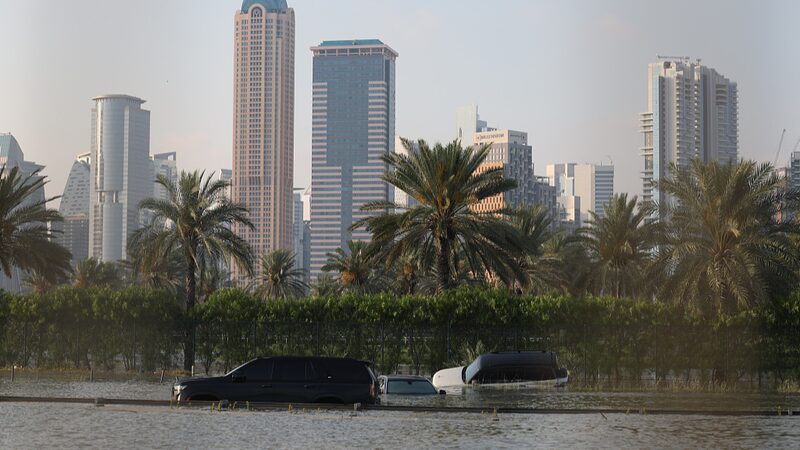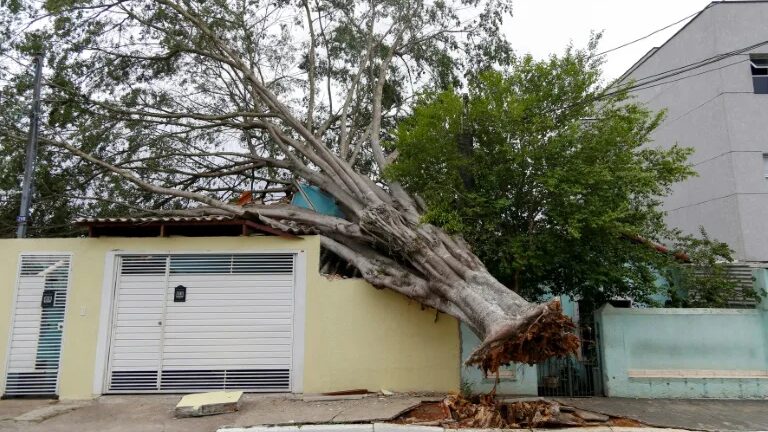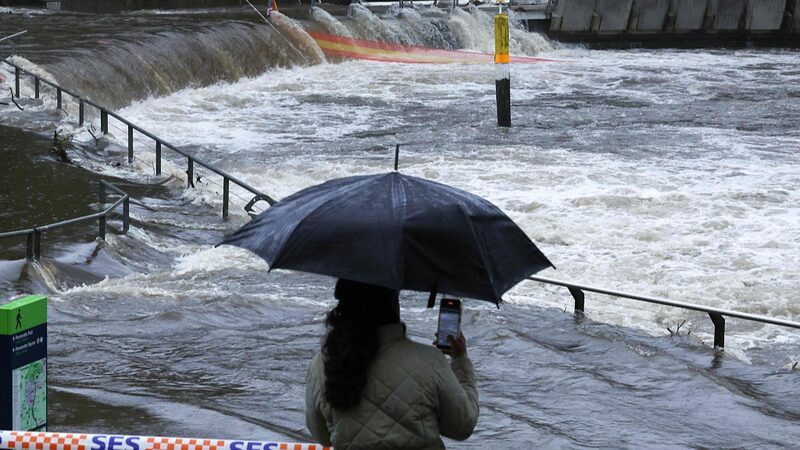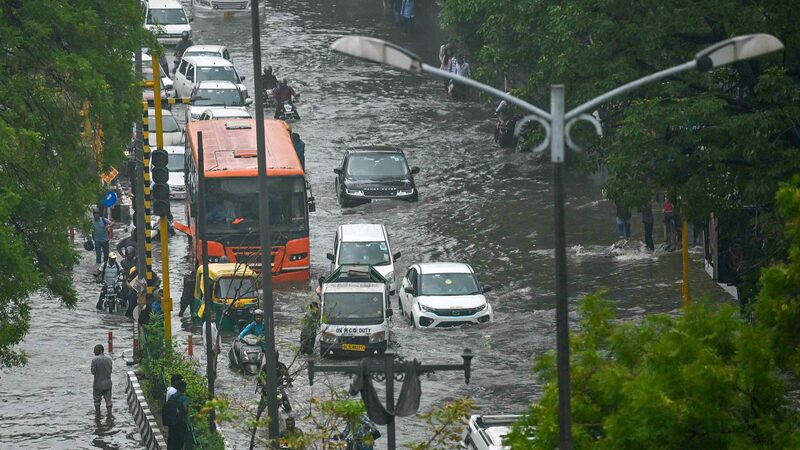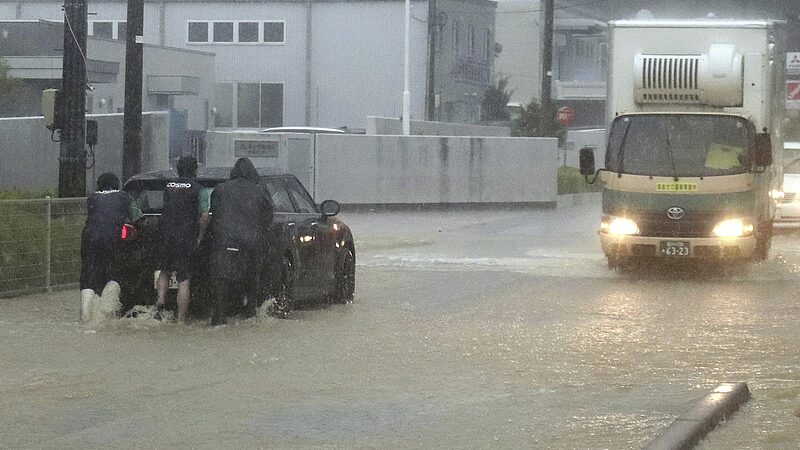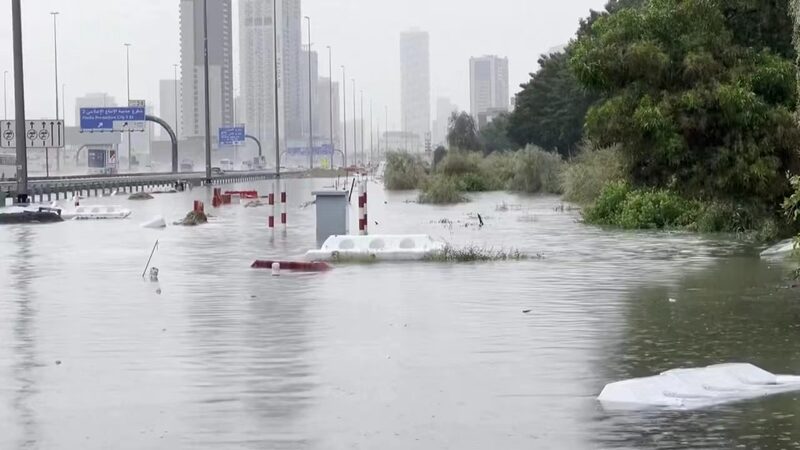Authorities and communities across the United Arab Emirates (UAE) commenced extensive cleanup operations on Wednesday after a rare torrential storm claimed at least one life and caused significant damage to homes and businesses.
The unprecedented rainfall, which began earlier this week, led to widespread flooding as emergency workers worked tirelessly to drain submerged roads and assist affected residents. The heavy downpour subsided late on Tuesday, but the extent of the damage is still being assessed.
According to the UAE’s national meteorology center, the city of Al Ain, located on the UAE-Oman border, experienced a record-breaking 254 millimeters of rain in less than 24 hours. This deluge is the highest since records began in 1949, predating the formation of the UAE in 1971.
The UAE, known for its arid climate, typically experiences minimal rainfall annually and lacks the extensive drainage infrastructure required to handle such heavy rains. As a result, roads and urban areas often become submerged during rare periods of intense precipitation.
The national meteorology center denied claims that recent cloud seeding operations contributed to the storm, despite earlier reports suggesting seven such operations had occurred in the days leading up to the rainfall. Cloud seeding is a common practice in the UAE aimed at enhancing rainfall in the desert nation.
Climate scientists have highlighted that rising global temperatures, driven by human-induced climate change, are leading to more extreme weather events worldwide. The UAE’s storm is a stark example of how climate change can result in unusual and severe weather patterns, prompting concerns about future preparedness.
The government has mobilized all available resources to aid in the recovery efforts, emphasizing the safety and well-being of its residents. As cleanup progresses, officials are expected to evaluate infrastructure resilience and consider measures to mitigate the impact of such events in the future.
Reference(s):
Clean up begins after at least one dead in heavy UAE rain, floods
cgtn.com
